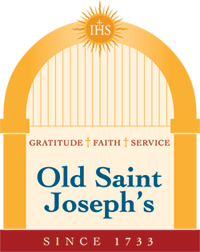for August 1
Memorial of Alphonsus Liguori, Bishop and Doctor of the Church
Today’s gospel speaks about the nature of evil. Good and evil are often imagined in military images; with the forces of good arrayed against an evil empire. Matthew’s portrait of Herod suggests this isn’t always so.
Herod the Tetrarch is much more of a low-level, petty tyrant. Words like “sleazoid” and “slimeball” seem more appropriate than “emperor of evil.” Herod rules a small share of a divided inheritance. His relationship with his brother’s wife is suspect. He makes extravagant promises and cares more for his public image than for the life of John the Baptist. Yet he is capable of recognizing, at least dimly, the mighty powers that he is up against. He knows that in Jesus, something stronger than even death is at work. He is also capable of doing evil.
Today’s gospel is the third in a string of short passages about recognizing good and evil. The preceding passage (yesterday’s gospel of the day) concludes with the familiar pronouncement that a prophet is not without honor except in his native place (something that Jeremiah certainly experienced too). Just before that are the trio of parables read in last Sunday’s gospel: the treasure in the field, the pearl of great price, and the net full of fish. Remember that it is not until the end of the age that the angels will separate out the good and bad fish, rather like the way the wheat and weeds can only be separated at harvest.
Now, back to Herod. He is a warning that the difference between good and evil may not be as evident at the outset or as clearly drawn as loyalty to one team against another, or one nation over another. Despicable, destructive power may lurk in hidden-away places, in the cumulative effect of small choices. In contemporary terms, we must be alert to the ways that evil and sin are structural, built into the daily routines of our lives and part of decisions and actions that seem to us not really a big deal.
When we listen to today’s gospel, or even just hear the words “the death of John the Baptist,” it’s not easy to get the grotesque image of his head on a platter out of our heads. While Matthew does use John’s death and burial to signal the kind of death that Jesus will suffer, try not to focus there. Look instead at what leads up to that moment, and learn from Herod the signs of evil at work.
—BJ Brown
The readings can be found on the US Conference of Catholic Bishops’ website.
Mass Times
Sunday at 7:30 AM, 9:30AM, 11:30 AM
Tues., Wed., & Thurs. at 12:05 PM
